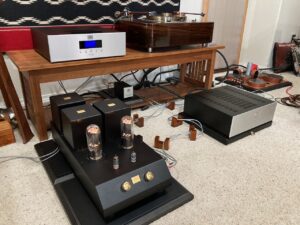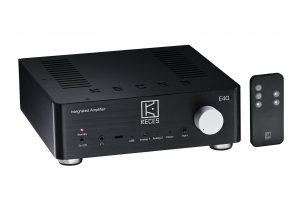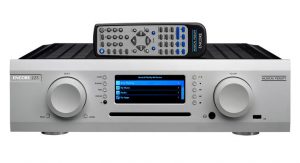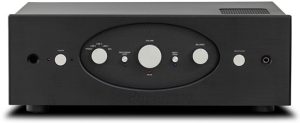I've had my Leben HiFi Company CS-600 integrated amplifier for over a decade now. I purchased it after the review, and I have enjoyed every minute with it.
My Leben CS-600 has been totally reliable, excels musically & sonically, and it is beautiful to look at.
The CS-600 was also a very well thought out and flexible design, built to a high-quality standard, and has provided me with a tremendous amount of satisfaction over the years while listening to music and watching movies.
To this day the Leben CS-600 has been one of my most cherished hifi possessions. The Leben CS-600 has been in my amplifier stable longer than any other amplifier I own, and never once have I been tempted to part with it for something else.
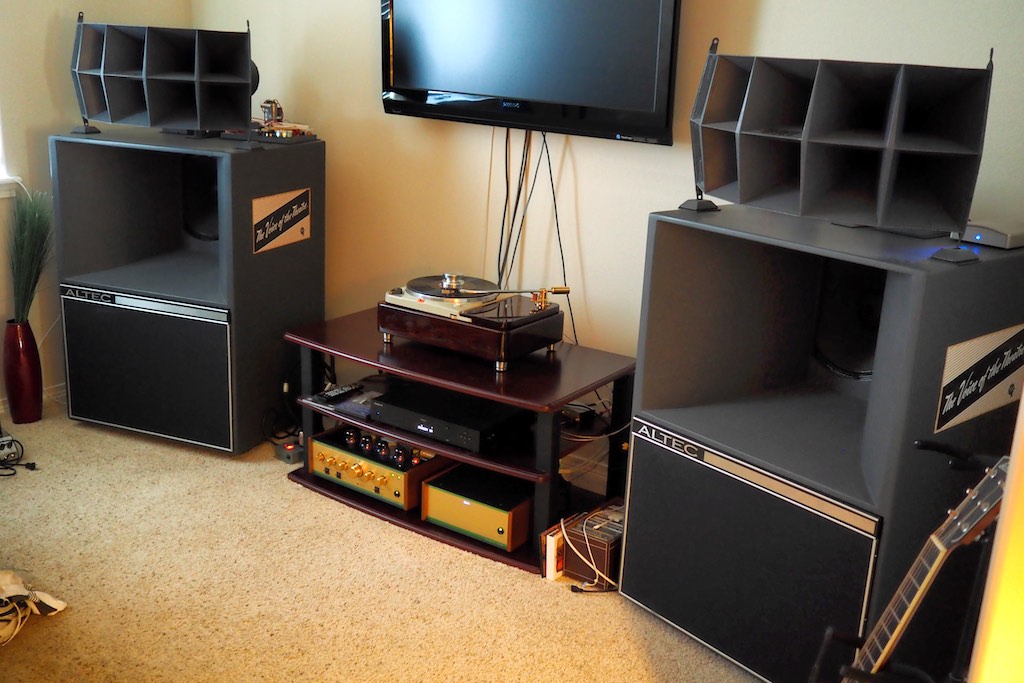
My Leben CS-600 normally resides in my vintage Altec A5 Voice of the Theatre loudspeaker based audio-visual system (above), but has recently been displaced due to the arrival of the new Leben CS-600X that is in for review—the subject of this article.
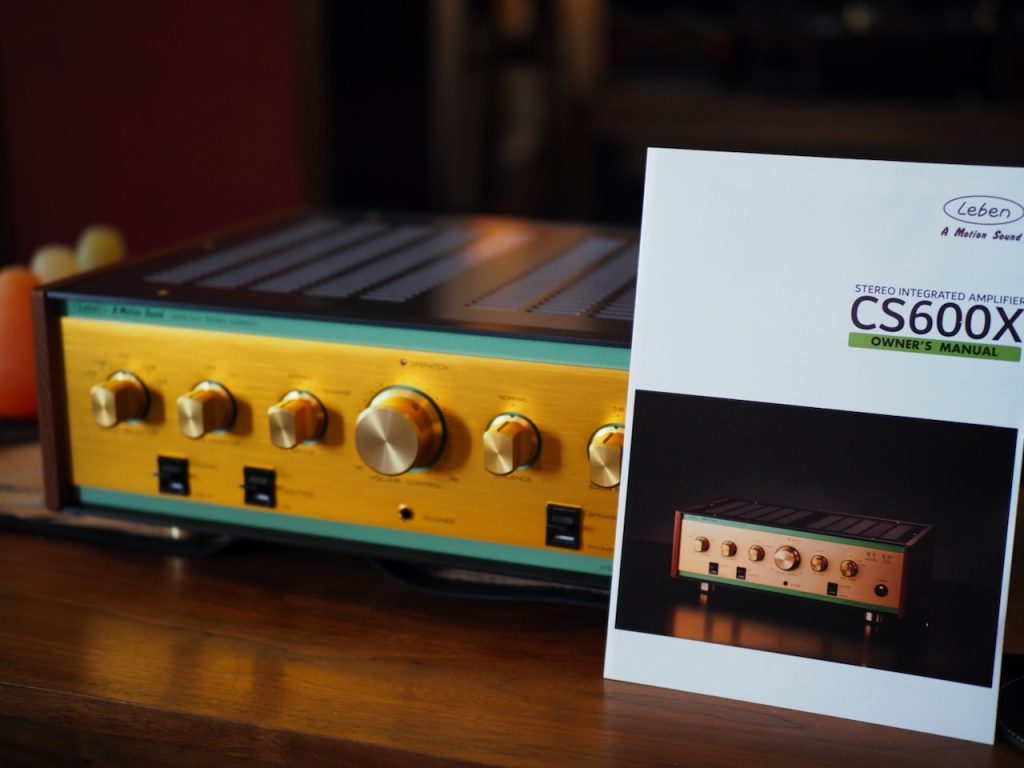
You might wonder why the Leben HiFi Stereo Company chose to make a change to such a masterpiece of audio design—why mess with success?
The answer is a simple one. The vintage new old stock (NOS) 6CS7 vacuum tubes used in the CS-600's first stage of amplification are not currently produced, and NOS 6CS7s have become increasingly difficult to come by as supplies have dwindled, and any remaining stocks will eventually be exhausted.
Leben chose the sensible approach of making a few minimal changes to the circuitry in the CS-600 to create the CS-600X, allowing the utilization of readily available current production 12AU7A and 12BH7A vacuum tubes for the first stage of amplification.
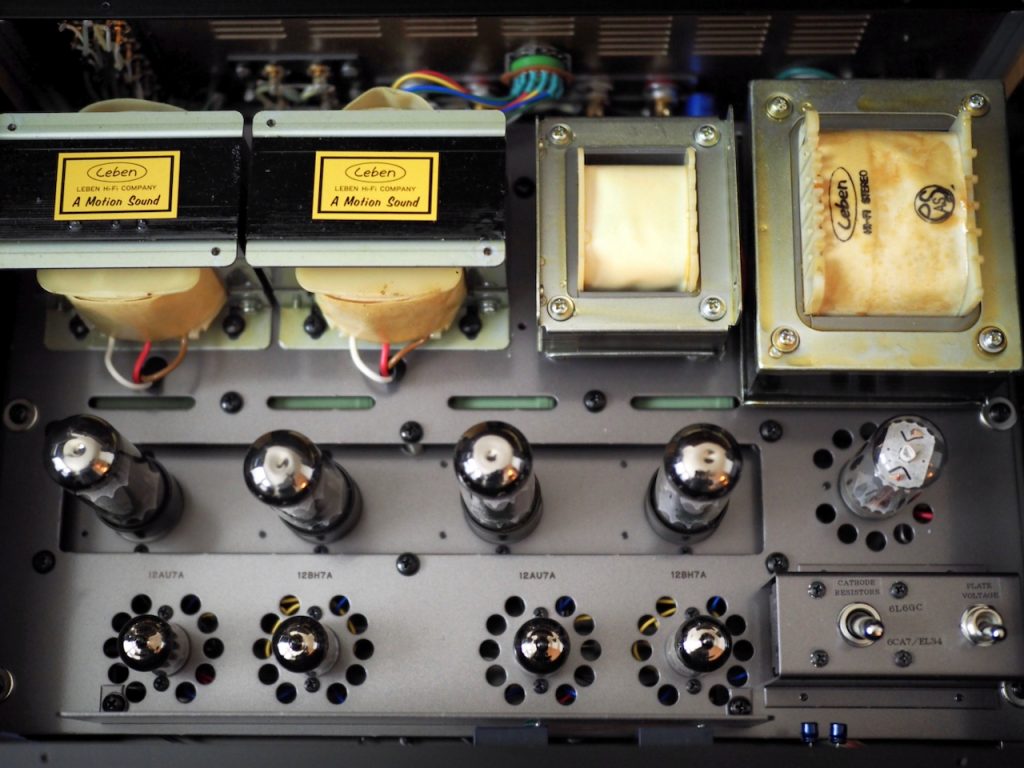
If you own an original CS-600 you need not fret, as the Leben HiFi Company has developed a relatively simple modification that can be performed by a qualified technician near you, so that your CS-600 can use the same type of vacuum tubes used in the first stage of amplification as the new CS-600X.
The modification requires the replacement of four resistors, a re-wiring of the tube sockets, and the replacement of the associated wires.
All you need to do to arrange for the modification of your CS-600 is to contact your local Leben dealer or importer, who can provide the details. I don't know what the cost is for having a technician perform the modification for the CS-600 yet, but being such a simple modification, it shouldn't be too terribly expensive.
Personally, I had previously stocked up on the vintage NOS 6CS7 and NOS 6CJ3 vacuum tubes used in the CS-600's circuitry, so I am not planning on modifying my Leben CS-600.
For those who aren't able to find a ready supply of NOS 6CS7 vacuum tubes for their CS-600, the Leben HiFi Stereo Company's offering of instructions on how to update the CS-600 to CS-600X specifications is very thoughtful indeed, allowing owners to preserve their investment in their CS-600 for the long term, so they can happily listen to music with it far into the future.
The Leben HiFi Stereo Company
Let me give you a brief background about the Leben HiFi Stereo Company, which Mr. Taku Hyodo founded in 1992.
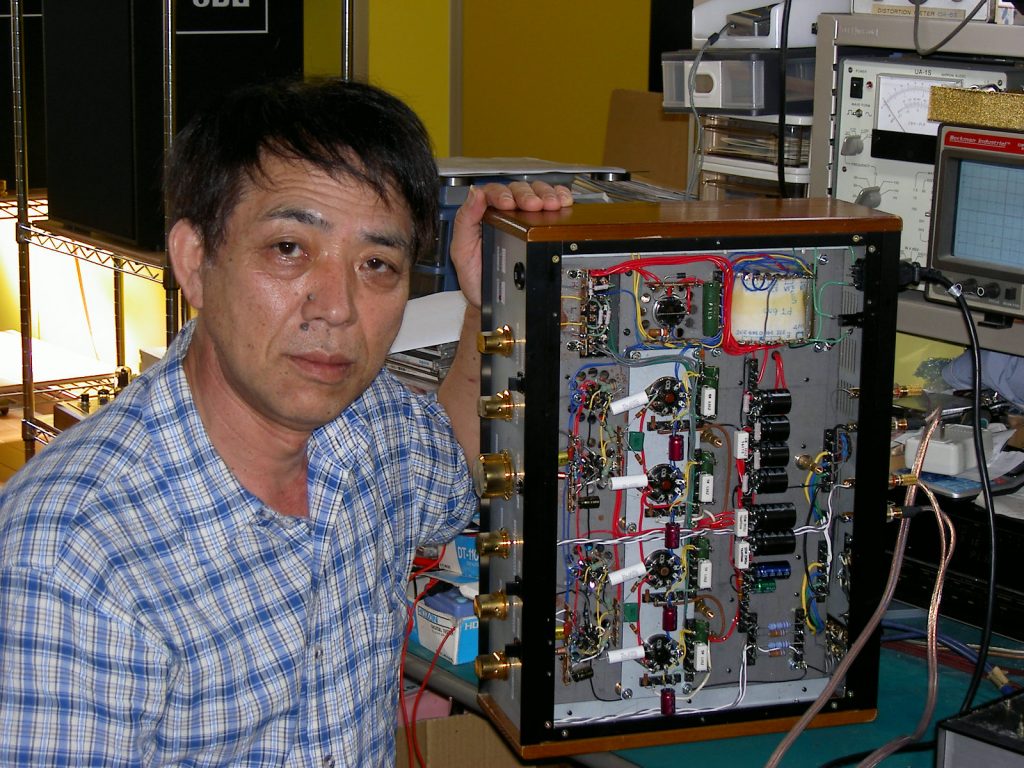
Prior to founding Leben, Hyodo-san designed electronics for Luxman. During that time, Hyodo-san had made some amplifiers for himself and a few friends for fun. Hyodo-san's friends loved the sound of those amplifiers and encouraged him to use his obvious talent to start his own audio company.
Hyodo-san responded to his friends' encouragement by founding his own 'private label' electronics company in 1992 to reflect his philosophy that 'music is life.'
In keeping with this philosophy, Hyodo-san called his new company Leben, as "Leben" is a German word that literally means "life."
Leben products had been available exclusively in Japan until a little over a decade ago, when Yoshi Hontani (Muson Project) started exporting Leben Hi-Fi Stereo Company products to distributors in other countries.
In the USA, where I live, Jonathan Halpern of Tone Imports is the Leben importer, and imports a small number of Leben products each year for discerning music lovers, like Norah Jones, for example.
There are only a small number of Leben products that are hand-crafted each year, and when they are all sold there are no more are to be had, kind of like special wine vintages.
I have always been impressed by Leben's build quality, and their products' elegant good looks. The transformers and many of the internal parts are made in-house by Leben too.
If you look closely at the front of the Leben CS600 / CS600X, you'll see that it says 'A Motion Sound' across the top. This phrase had piqued my curiosity so I asked Hyodo San about it.

"When I was a youngster, my father worked as a movie projectionist and I went to see many movies with him. Paramount Pictures used to call a movie "A Motion Picture" and I adapted this phrase to Leben."
Movies consist of many still shots of theatrical performance that when run at speed on a film projector brings the movie to life-like motion for its viewers. In the same way "A Motion Sound" conveys playing a "film" (recording) of a musical performance in a way that brings the musical performance to "living motion" through a Leben amplifier.
I asked Hyodo San what influences have shaped him as a designer:
"I have been listening to live music and playing musical instruments like the guitar, clarinet and drums since I was young. I was a professional acoustic guitarist for a few years in my twenties and now I continue to enjoy playing musical instruments as a hobby. My experiences performing and listening to live music helped me a lot in designing my amplifiers. Listening to live acoustic instruments guides my amplifier designs, as live music always helps people relax and enjoy the music."
"For example, when designing an amplifier, audiophile grade components don't always bring better sound. If I were to make an amplifier with nothing but premium audiophile components, there is no guarantee that the amp will sound good. It is more important to select components by listening so that as a whole, the amplifier plays music better. The most important thing is to achieve a total musical balance."
"I am aiming for a natural sound in my designs that allows the listener to relax and enjoy the music, so I always try to consult with as many ordinary listeners as possible, friends and family. I design my products for real people, the unspecified music lovers. I think Mike Eliot has it right (formerly an engineer with Mark Levinson, now Aria Audio) who said (paraphrased), "Don't rely on audiophile-grade parts to give you a musical sound. When you design a new amp, pick what you think are the most musical parts. Then consult with your wife or lover to see if they think it makes the music sound enjoyable as a reality check.""
Leben amplification products are known for excelling at playing music in a natural and effortless way, being harmonically rich, tonally correct and transparent, having a tight and tuneful bass response and very wide bandwidth.
The Leben CS-600X Integrated Amplifier
Hyodo San told me that during the design phase of the CS-600 / CS-600X he used a simple push-pull circuit based on good tubes supported by high quality electronic components to give a total musical balance.
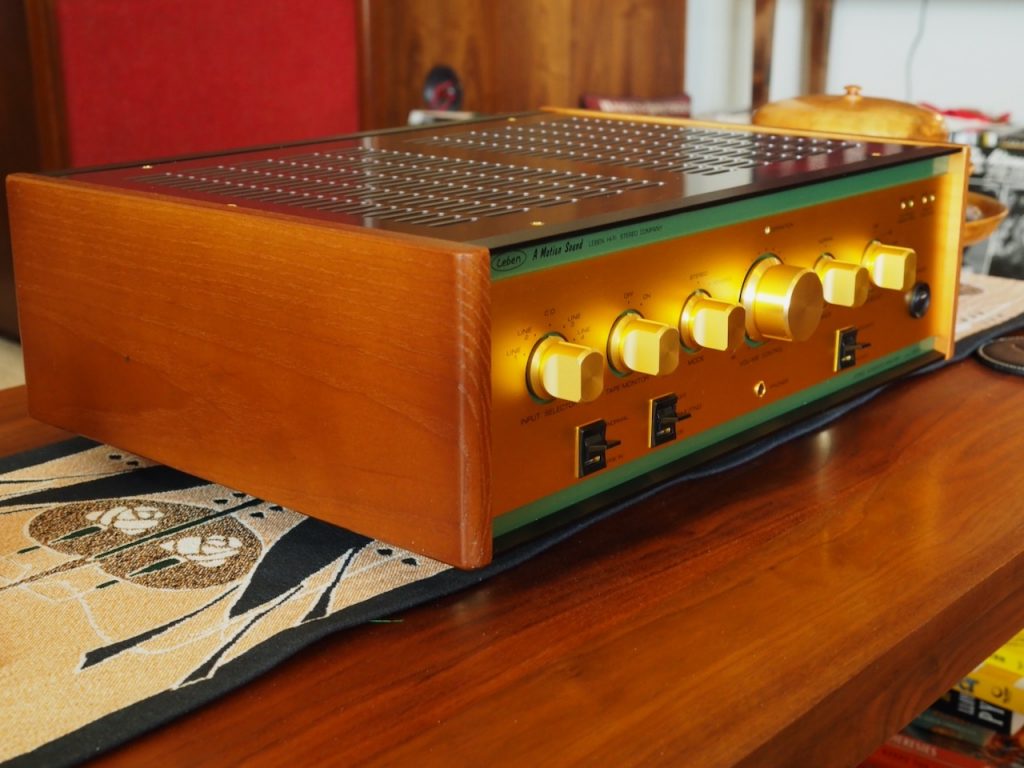
Hyodo San made the decision to run all tubes very conservatively so they would provide extra-long life and reliability to the owner, even though it meant sacrificing some output power to do so, with the CS600/X outputting 32W with 6L6GC vacuum tubes, and 28W with EL34 vacuum tubes.
I can attest to the long life and reliability of vacuum tubes used in my CS-600 due to Hyodo-san's conservative operating points, as over the course of a decade the only vacuum tube I've needed to replace due to being worn out was a 6CJ3 rectifier.
I have done a little "tube rolling" of the NOS 6CS7 vacuum tubes used in the first stage of amplification, and settled on the NOS Sylvania 6CS7s as my favorite. To the best of my recollection that was about a decade ago, and my Sylvania 6CS7s continue to perform admirably and sound gorgeous.
I have tried quite a few different output tubes for voicing and entertainment purposes, and finally settled upon the Sophia Electric EL-34ST as my favorite output tube for my CS-600. The Sophia Electric EL-34ST was designed to be a long-life vacuum tube, and mine have been in my CS-600 since 1997 and I'm guesstimating that they have about 4500 hours on them now, and maybe more.
Reliable.
For the first stage of amplification, the original CS-600 used the aforementioned television tube known for reliability from the black and white days, the twin-triode 6CS7, whose controlled heater provides gradual warm-up for greater reliability and extended tube life.
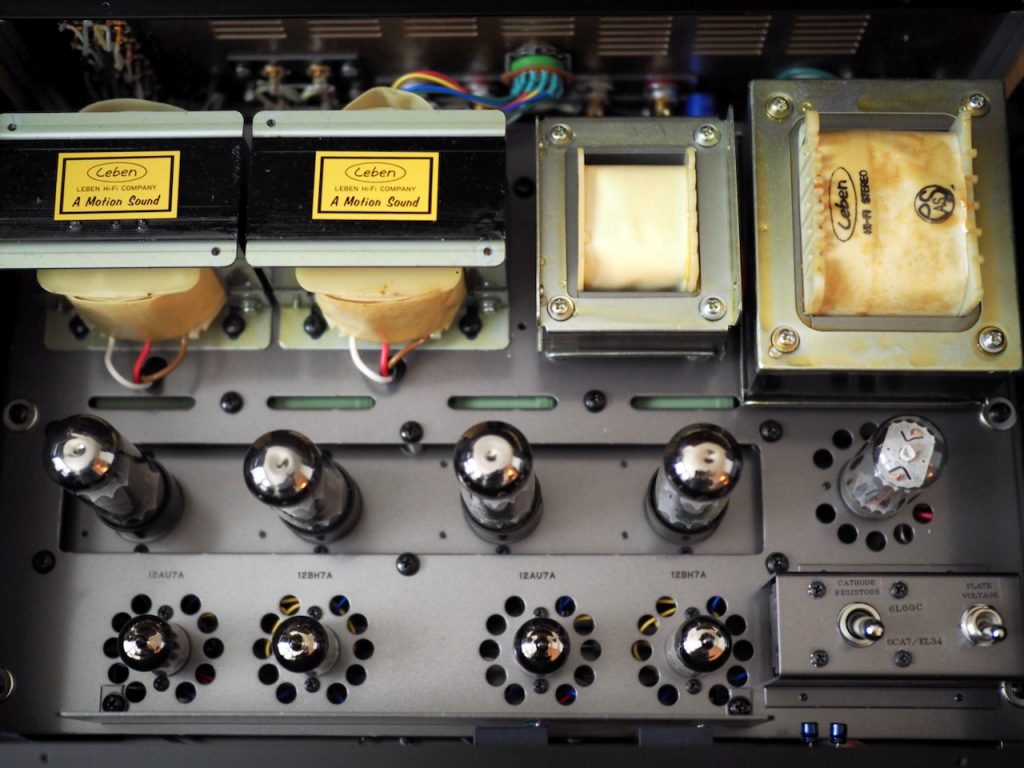
The new CS-600X has switched to using a pair of 12AU7A and a pair of 12BH7A vacuum tubes in the first stage of amplification, instead of the quad of NOS 6CS7 vacuum tubes used in the original design of the CS-600.
The review Leben CS-600X came with a pair of JJ ECC802-S / 12AU7 …
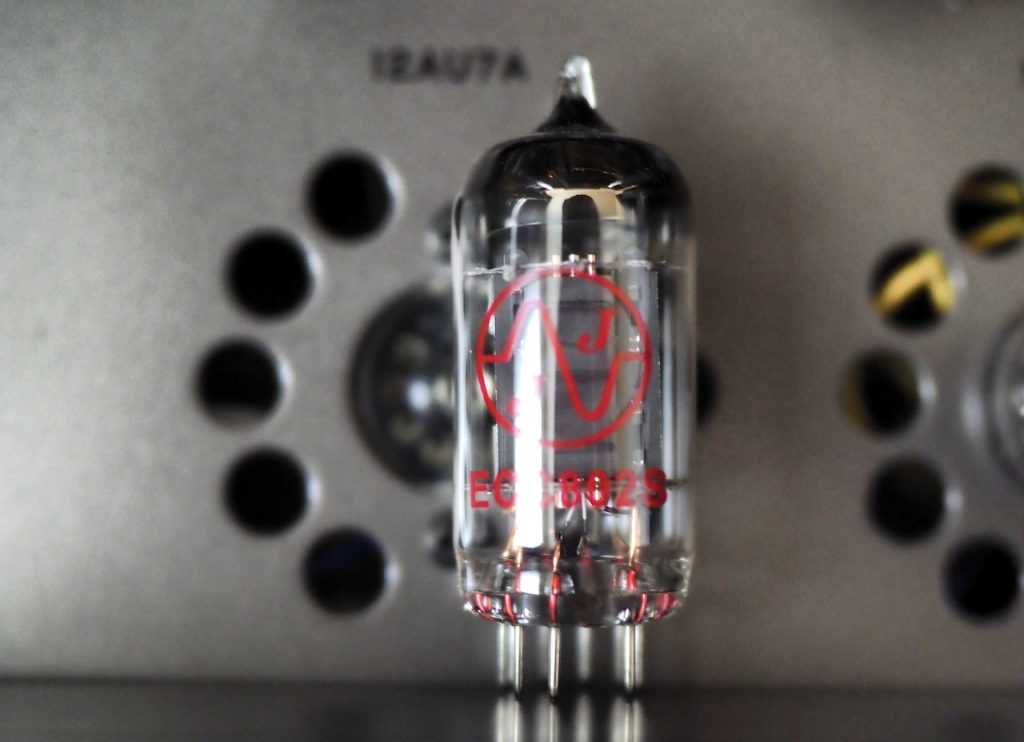
… and a pair of JJ 12BH7-A vacuum tubes.
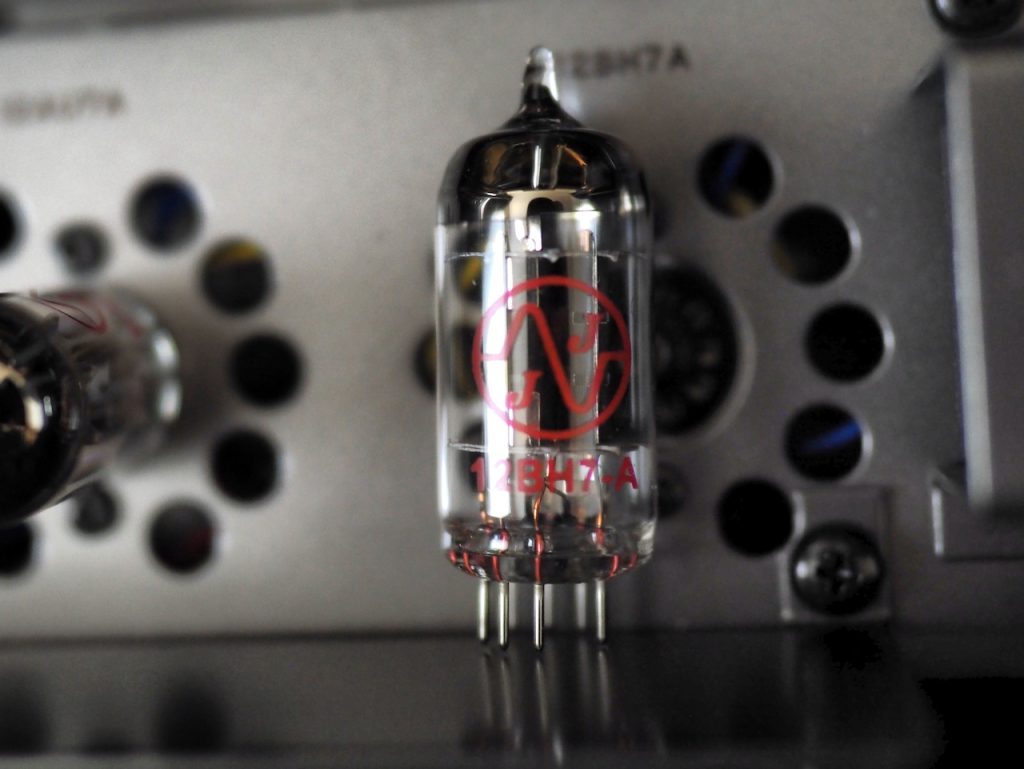
For a rectifier the CS600X uses an ultra-reliable B&W television tube, the 6CJ3. The 6CJ3 rectifier draws little current and provides a slow turn-on of the high B-voltage to the power tubes which increases their reliability and life-span.
The review Leben CS-600X came with a very classy NOS Raytheon 6CJ3 (below).
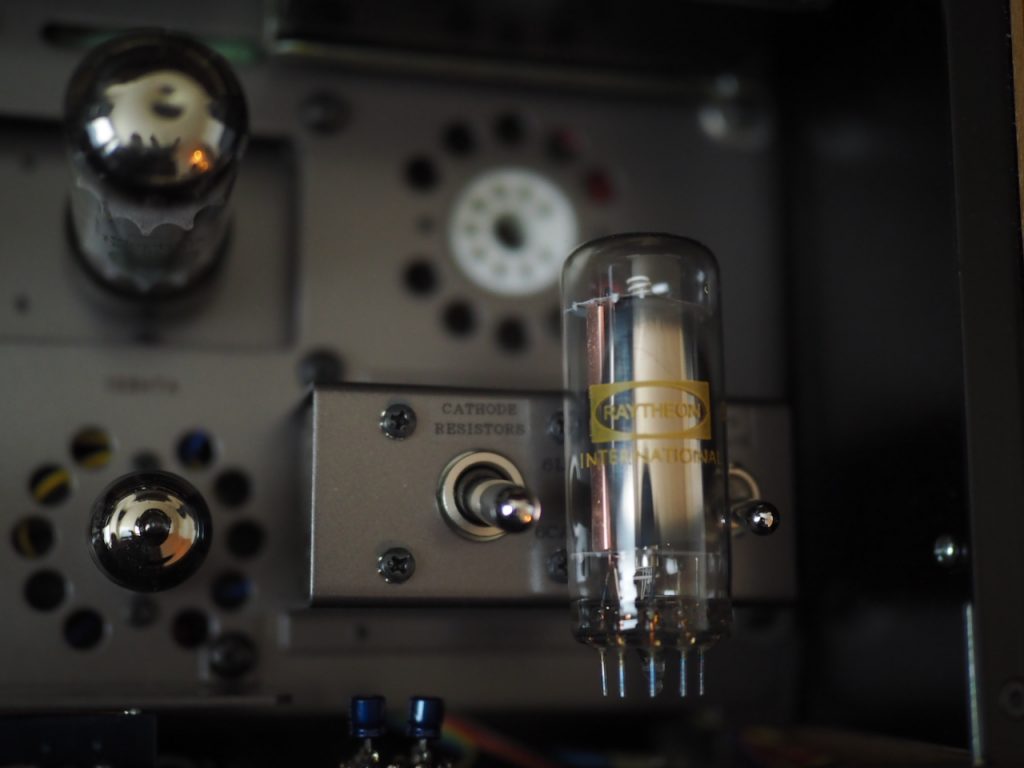
NOS 6CJ3 rectifiers are relatively abundant at this point in time, but I recommended you keep a supply in reserve as they are not in current production.
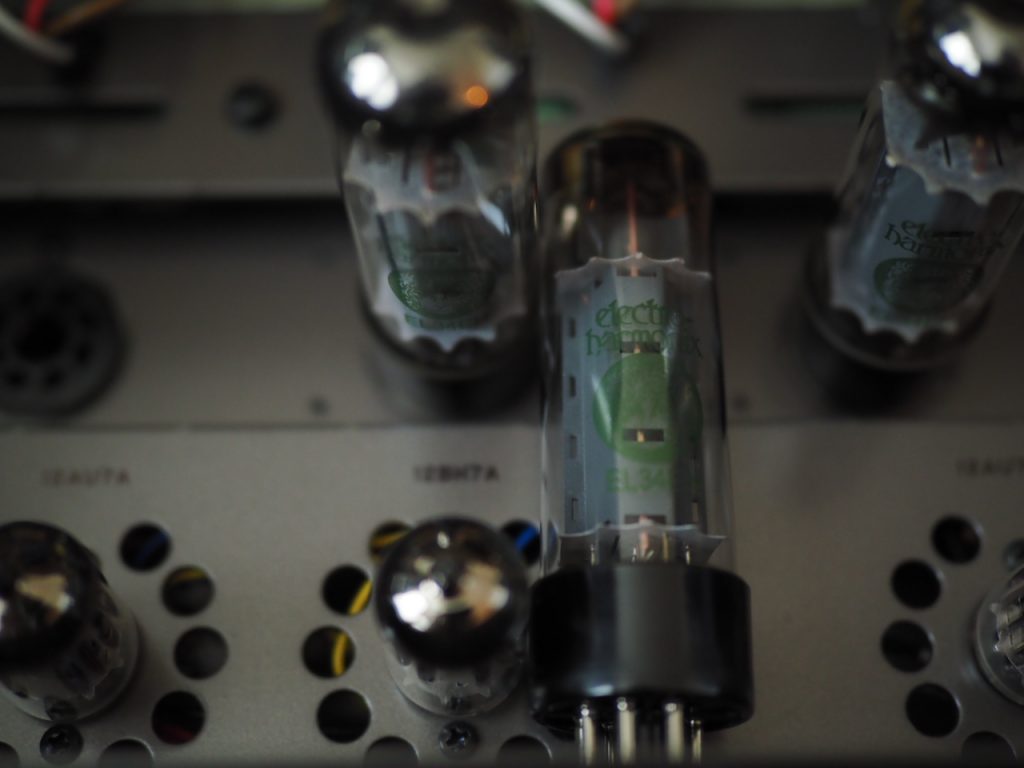
Only one push-pull pair of power tubes is used per channel, the conceptual equivalent of a 'single-ended' circuit in simplicity. Hyodo San feels this design provides the best combination of sonics and musicality.
The review CS-600X came with a quad of Electro-Harmonix EL34EH vacuum tubes (above).
I think it will come as a bit of a shock to SET devotees—like it did with me way back when I first reviewed the CS-600—that this refined little push-pull integrated amplifier can go toe-to-toe in a slugfest with many an SET amp, and KO them musically.
It's a truly brilliant design, and I think the new tube complement of 12AU7A and 12BH7A vacuum tubes for the first stage of amplification takes the CS-600X to the next level, which I'll tell you more about in my listening impressions.
The circuit in the CS-600X is self-biasing to give the music lover a carefree product when changing vacuum tubes, plug 'n' play, as they say in computer circles.
Let's do a walk around of the new CS-600X and explore its various features.

Starting on the left-hand side of the CS-600X you see the input selector that allows the listener to choose between one of five inputs: Line 1, Line 2, CD, Line 3, and Line 4.
Next to the input selector is the tape monitor switch. This is a classic feature from back when people did a lot of taping of their LPs, and allows the listener to hear what is being recorded on the tape.
Below and in-between the input selector and tape monitor switches, you can see the switch that allows selection of the normal integrated amplifier mode of the CS-600X, or alternatively, the preamplifier-in mode for those who want to use a preamplifier with their CS-600X.
The CS-600X has inputs on the rear panel for a preamplifier, which allows the CS-600X to be used as a power amplifier, bypassing the source selector, mode switch, tape monitoring circuit and volume control.
Next to the tape monitor is the mode switch, which allows you to reverse the left-right stereo channels.
Below and in-between the tape monitor and mode switches, you can see the mute switch, which allows you to mute the source momentarily should you desire to.
Next, we come to the volume control, located in the middle. There is a blue LED above the volume control that will light up a few seconds after the CS-600X is turned on to indicate that it is ready to play music. The blue LED is powered by the output tube cathode bias and not by a relay or timer, meaning the LED lights only when the output tubes are fully warmed up and ready to go.
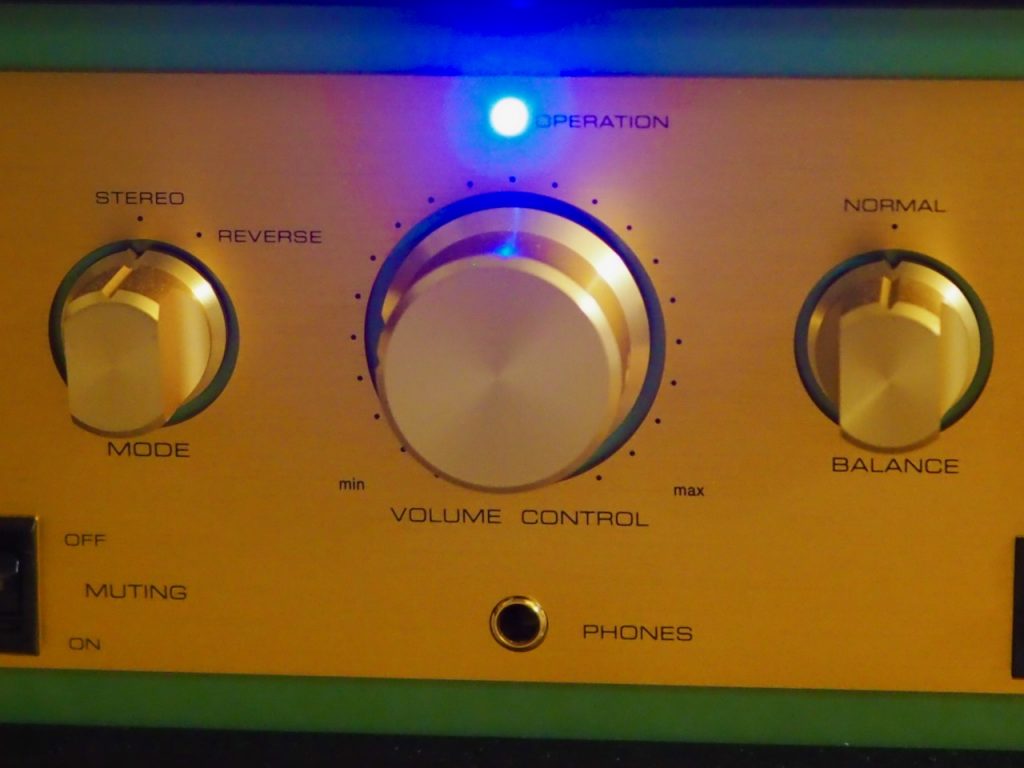
Below the volume control you can see the headphones jack. The CS-600X's headphones jack takes the audio signal directly from the output transformers, and I've been told by numerous people that the headphones performance of the CS-600X is out of this world, but not being a headphones kind of guy, I haven't checked that out for myself.
To the right of the volume control is the balance control, so you can adjust the left-right balance of the stereo signal should you need to.
To the right of the balance control is the bass boost switch. The CS-600X has a two-position bass boost circuit (+ 3dB and +5dB) that I have found to be useful in nicely fattening up the bottom end for certain loudspeakers, like my vintage Altec 832A Corona loudspeakers. Think of it as a "warmth" switch for warming up leaner sounding loudspeakers.
The bass boost is controlled by condensers and resisters located in a negative feedback loop, a very rare and refined method of boosting bass according to Hyodo-san, who says this way of boosting bass is much better than a typical tone control circuit, being both simple and effective. The midrange is shielded from the bass boost circuit by a 15 K-Ohm filter resistor within the circuit.
For those who listen using both loudspeakers and headphones, there is a selector below and between the balance control and bass boost switch that allows the listener to select between listening with loudspeakers, and listening with headphones.
There are cathode-resistor and plate-voltage switches inside the chassis that allow the listener to optimize the CS-600X for a variety of different tubes should you want to experiment with voicing the amplifier for a particular system, or just to have a bit of tube rolling fun.

In the top right corner there are red and green LEDs, for the cathode-resistor and plate-voltage switches, that will light up to show if you are using the 6L6GC or EL34 switch positions, respectively.
Below the cathode-resistor & plate-voltage red & green LEDs is the power switch.
Now let's take a look around back.

On the left side you see the AC input, and just to the right of it you see the fuse holder.
At the bottom-middle of the chassis you see the four binding posts, and in the middle just above them you see a switch for selecting the transformer taps that best match your loudspeaker's impedance: 4 Ohm, 6 Ohm, 8 Ohm, and 16 Ohm (perfect for my vintage Altec loudspeakers!).
To the right of the binding posts you see the RCA preamp inputs mentioned earlier, and just above them are recording-out connections for a tape machine.
To the right of these are a grounding terminal, which I use to connect to the ground of my Leben RS-30EQ phono preamplifier.
To the right of the grounding point are the RCA inputs for sources.
To round out the views of the CS-600X, below you can see the side view …
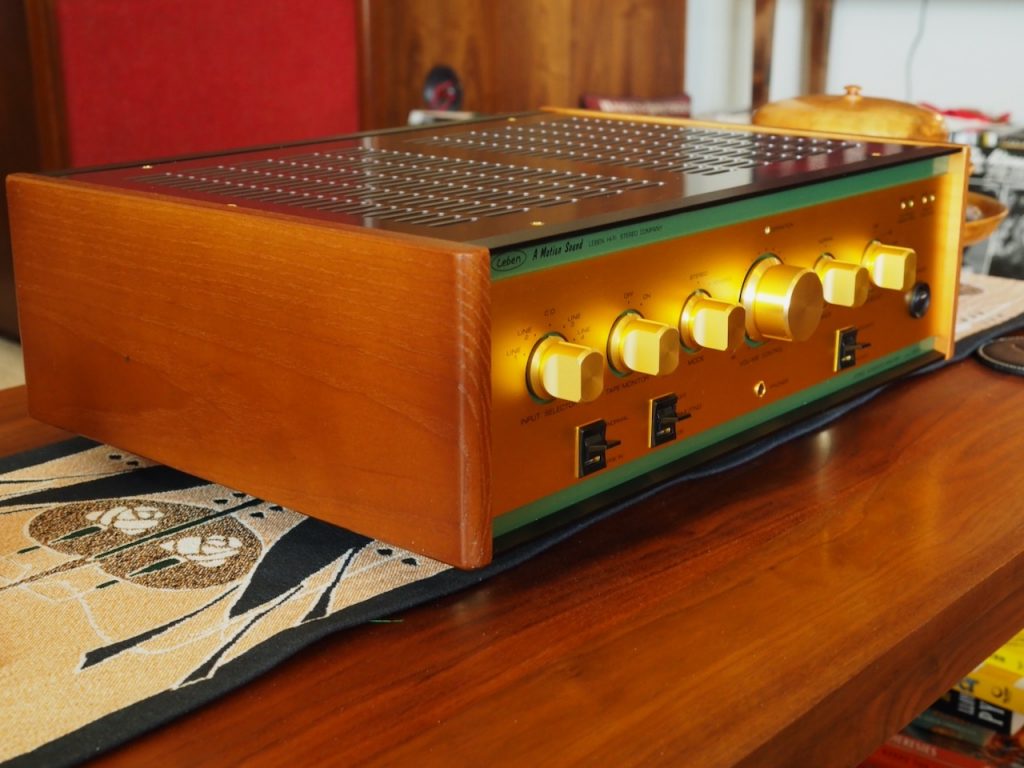
… the top view …
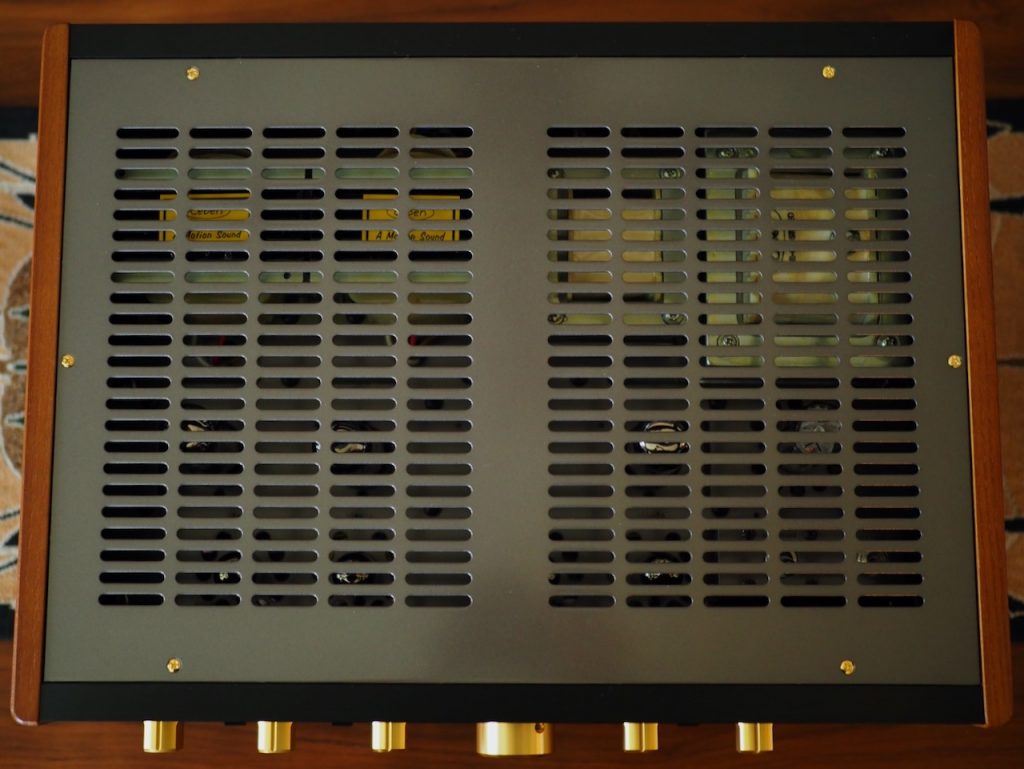
… and the bottom view. By the way, the footers on the new CS-600X are nicer than the footers on my CS-600.

There are many possible tube choices for voicing or for extra entertainment. The CS-600X can use a variety of tubes from the 6L6 and EL34 families by varying the positions of the cathode & plate switches.
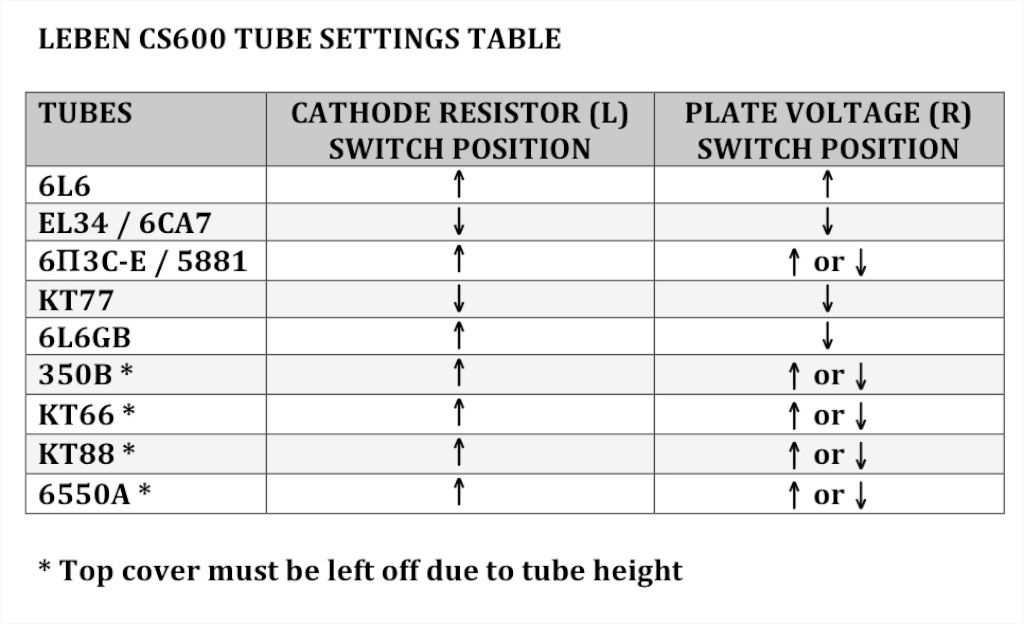
In the 6L6 family, there are the aforementioned 6L6GC, the 6L6WGB, the 6L6GB, the KT66 and the 350B.
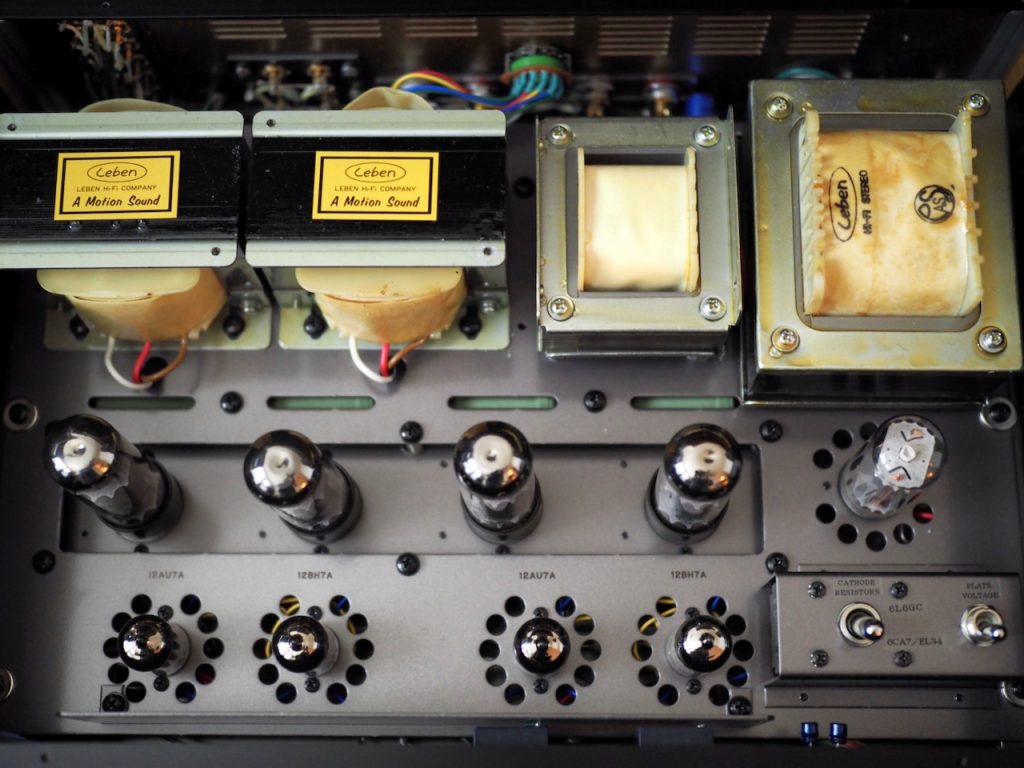
In the EL34 family there are the EL34 and the KT77.
In addition, taller vacuum tubes like the 6550 and KT88 (ditto for the 350B) can be used if you leave the top cover off.









